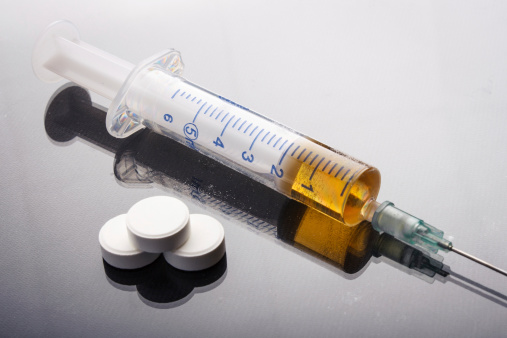Over the last decade, opioid use, addiction, and overdose have been dramatically increasing. While much of this increase in opioid use has been driven by increases in the use of prescription opioids such as Vicodin and Percocet, heroin use also has increased. As a result, deaths attributed to heroin jumped 39 percent from 2012 to 2013.
 Despite this growing threat, treatment for opioid addiction has not substantially increased. In fact, fewer than one in five people who need treatment for their opioid addiction receive it. The reason for this is multifactorial—the number of drug treatment programs that offer medication-assisted treatment have not substantially expanded in size and, outside of drug treatment programs, the number of doctors who provide medication-assisted treatment for opioid addiction has been limited. This unmet need for opioid-addiction treatment is likely to grow in the coming years; therefore, it is important for doctors and patients to be aware of, and choose, the proper treatment. This is a need I encounter through my work at Montefiore Medical Center and Albert Einstein College of Medicine.
Despite this growing threat, treatment for opioid addiction has not substantially increased. In fact, fewer than one in five people who need treatment for their opioid addiction receive it. The reason for this is multifactorial—the number of drug treatment programs that offer medication-assisted treatment have not substantially expanded in size and, outside of drug treatment programs, the number of doctors who provide medication-assisted treatment for opioid addiction has been limited. This unmet need for opioid-addiction treatment is likely to grow in the coming years; therefore, it is important for doctors and patients to be aware of, and choose, the proper treatment. This is a need I encounter through my work at Montefiore Medical Center and Albert Einstein College of Medicine.
Available options for opioid addiction treatment
Opioid addiction treatment options include medication-assisted treatment and psychosocial counseling. Medication-assisted treatment can take the form of detoxification (“detox”) or long-term maintenance treatment. Research clearly demonstrates that short-term detox is not effective. The risk of relapse after undergoing detox is extraordinarily high. This is why medication-assisted long-term maintenance treatment is optimal, as many studies demonstrate numerous benefits of receiving maintenance treatment.
Although psychosocial counseling can enhance outcomes when used in combination with medication-assisted treatment, psychosocial counseling alone is often ineffective. Three medications are approved for the treatment of opioid addiction—two opioid agonists (methadone and buprenorphine) and one opioid antagonist (naltrexone). Of individuals receiving medication-assisted treatment for opioid addiction, the vast majority receive opioid agonist medications, which are reviewed below.
Methadone’s usefulness
Methadone is a full opioid agonist that “replaces” the opioid being abused. Because of its pharmacologic properties, methadone reduces cravings, withdrawal symptoms (heart racing, bone pain, diarrhea, runny nose, irritability and more) and illicit opioid use, without producing euphoria.
In addition, other benefits of methadone include reductions in infectious disease and criminal activity and improvements in quality of life, social functioning and survival.
Still, there’s a lot of stigma around methadone. Methadone treatment is highly regulated at the federal and state levels and can occur only in specialized treatment centers. While it’s true that some patients who demonstrate success in their treatment may receive a home supply of methadone, the reality is that many patients need to visit maintenance treatment programs at least five days per week for observed treatment. The number of people who can receive methadone treatment is regulated, and the number of methadone programs in each state is regulated. A few states have no methadone treatment programs, while several states have only one or two methadone treatment programs.
Buprenorphine’s pros and cons
Similar to methadone, buprenorphine is an opioid agonist that replaces the opioid of abuse. However, several aspects of buprenorphine set it apart from methadone.
First, while methadone is a full opioid agonist, buprenorphine is a partial opioid agonist. This difference leads to buprenorphine having a much better safety profile, but also having less potency among people who have high tolerance levels for opioids.
This pharmacologic difference also means buprenorphine treatment is much less regulated than methadone. Buprenorphine treatment can occur in any setting and be prescribed by any doctor who has received a waiver to prescribe it. (A physician typically has to complete an eight-hour training to receive the waiver.) People receiving buprenorphine treatment are typically seen by a physician monthly and obtain their medication from a community pharmacy. Buprenorphine treatment leads to improvements similar to those achieved by methadone treatment.
Methadone or buprenorphine—how to decide?
The decision about whether someone should seek buprenorphine treatment or methadone treatment depends on many factors. Methadone treatment often provides a more intensive treatment structure than buprenorphine treatment, which some patients find necessary. A person’s opioid tolerance level and other coexisting medical or psychiatric problems are key in deciding which medication and setting would be most beneficial. In addition, specific insurance plans may provide more coverage for one treatment than another.
The duration of treatment for both methadone and buprenorphine is made on a case-by-case basis. The optimal duration of treatment depends on how individuals do on treatment, their other medical or psychiatric problems, and their social circumstances. Addiction is a life-long illness that cannot be cured, but can be effectively managed.
In the end, treatment of opioid addiction should be tailored to individuals’ needs, and including medication-assisted treatment with methadone or buprenorphine is most likely to provide substantial improvements in health and quality of life. Treatment is available. However, there needs to be greater awareness of and access to it.
For more information about opioid treatment visit these two websites:
https://dpt2.samhsa.gov/treatment/directory.aspx
https://buprenorphine.samhsa.gov/bwns_locator/

